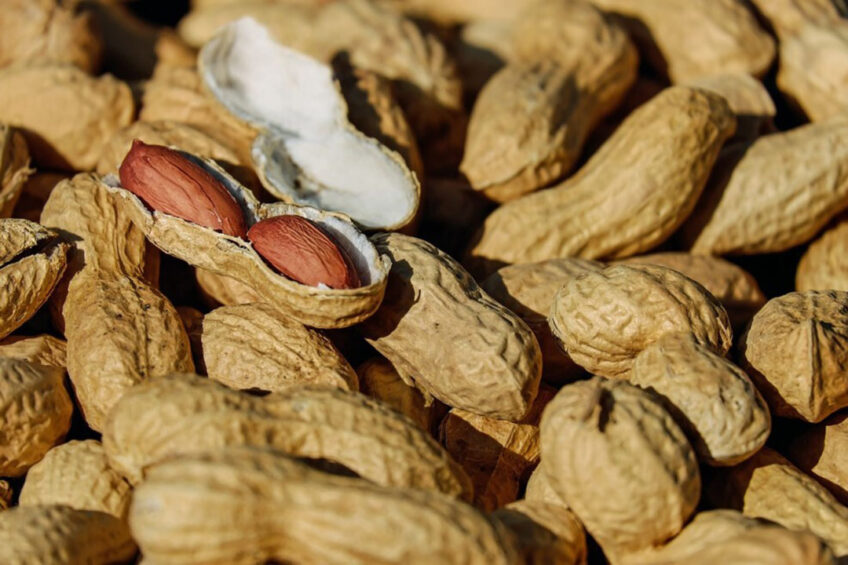The effects of peanuts in layer hen diets

A recent study aimed to determine the effect of whole-in-shell peanuts and unblanched peanuts on the performance and production of laying hens, as well as on the quality, lipid and fatty acid content of the eggs produced.
Peanuts like soybeans are legumes and oilseeds rich in protein, while also providing dietary lipids as energy. Interestingly, peanut skins provide 15% antioxidant-rich polyphenolic compounds, 19% fat, and 12% fibre.
North Carolina is ranked second in turkey and third in poultry production nationally, with over 5,700 family farms producing poultry and eggs, and is also one of the top-6 peanut producing states in America. A considerable quantity of peanuts produced do not, however, meet the industry’s standards for human consumption due to their size or because they are broken, for example. Furthermore, considerable agricultural waste of peanut shells and skins are produced by the peanut industry during the shelling and blanching process.
This abundance of peanut and poultry production led a team to conduct a layer feeding trial to determine the utilization of whole-in-shell high-oleic peanuts and/or unblanched (skin intact) high-oleic peanuts as an alternative feed ingredient for poultry.
The study of peanuts in layer diets
The study was conducted at the North Carolina Department of Agriculture and Consumer Services Piedmont Research Station where 576 shaver hens were randomly assigned to 4 dietary treatments, which all received feed and water ad libitum for 6 weeks. The treatments were:
- Conventional control diet (defatted soybean meal + yellow corn)
- A diet containing 4% whole-in-shell high-oleic peanuts (+ defatted soybean meal + yellow corn)
- A diet containing 8% unblanched high-oleic peanuts diet (+ defatted soybean meal + yellow corn)
- A non-conventional control diet (soy protein isolate + defatted soybean meal + yellow corn)
The nutritional content for whole-in-shell high-oleic peanuts
The peanuts were crushed to form crumbs, while each of the experimental diets was supplemented with vitamin, mineral, and selenium premixes. Pen body weights and feed weights were recorded and shell eggs were collected for quality assessment and chemical analysis.
Results of peanuts in layer hen diets
There were no significant differences in body weight or egg weight at week 6. Hens fed the control diet containing soy protein isolate produced more total dozen eggs relative to the group fed the conventional control diet. Hens fed the conventional control diet consumed less total feed relative to the other treatments with the best feed conversion ratio.
Most eggs produced from each treatment were USDA grade A, large eggs. There were no differences in egg quality, with the exception of yolk colour, with significantly higher yolk colour scores in eggs produced from the conventional control diet and control diet containing soy protein isolate relative to the other treatments.
Interestingly, eggs produced from the unblanched high-oleic peanuts treatment had significantly reduced stearic and linoleic fatty acid levels relative to the other treatments, while eggs produced from hens fed the whole-in-shell high-oleic peanuts diet had significantly greater β-carotene content relative to eggs from the other treatment groups.
Conclusion
In summary, this study reports similar body weights, feed intake, and egg weights between the peanut-containing diets to both control diets implying the effective utilization of whole-in-shell high-oleic peanuts and/or unblanched high-oleic peanuts as alternative layer feed ingredients at these inclusion rates. This, therefore, supports the use of peanuts as a value-added feed ingredient to support poultry and egg production while reducing waste from the peanut industry.
*This study was conducted by Kari L. Harding, Rebecca Wysocky, Ramon Malheiros, Kenneth E. Anderson, Thien Vu and Ondulla T. Toomer from Prestage Department of Poultry Science at NC State University, and the Food Science & Market Quality and Handling Research Unit, ARS, USDA.







